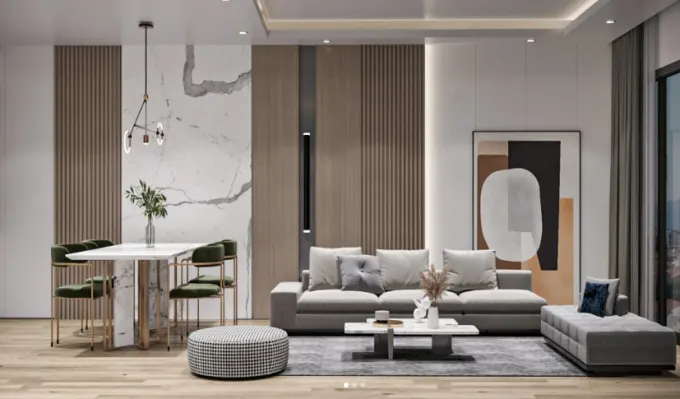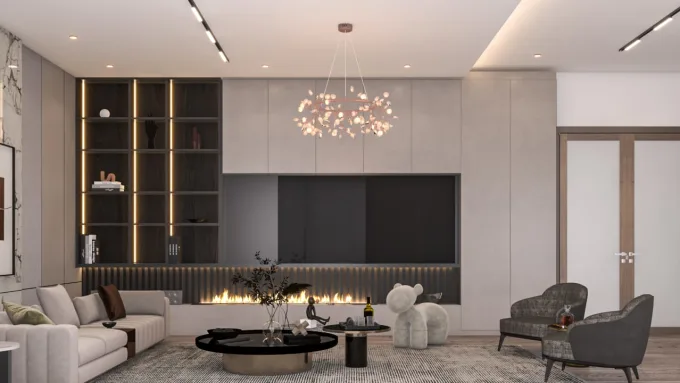Other
Implementing 3D Rendering Solutions for Success
In the rapidly evolving world of architecture and design, 3D rendering has become an essential tool for success. This powerful technology transforms ideas into visually stunning representations, providing clients and stakeholders with a clear and immersive view of projects before they are built. Implementing effective 3D rendering solutions can significantly enhance project outcomes, streamline workflows, and provide a competitive edge. This article explores the best practices for integrating 3D rendering into your workflow and the unique insights that can lead to successful project execution.
Understanding the Importance of 3D Rendering
Enhancing Visual Communication
3D rendering enables architects and designers to communicate their ideas more effectively. Traditional blueprints and 2D drawings can be challenging for clients to interpret. In contrast, 3D renderings offer a realistic portrayal of the finished project, making it easier for clients to understand and appreciate the design. This clarity reduces miscommunication and fosters a stronger collaboration between all parties involved. Additionally, incorporating a 3D furniture configurator can further enhance visual communication by allowing clients to customize and visualize furniture layouts within the space, leading to more informed decisions and greater satisfaction.
Boosting Client Engagement
Clients are more likely to engage with and invest in a project when they can see a detailed and lifelike representation. 3D renderings create an emotional connection, allowing clients to visualize themselves within the space. This engagement is crucial for securing approvals and funding, as clients feel more confident in the proposed design.
Streamlining Design Iterations
Design changes are inevitable in any architectural project. 3D rendering facilitates quick and efficient iterations, allowing designers to experiment with different ideas and instantly see the results. This flexibility accelerates the decision-making process and ensures that the final design meets all requirements and expectations.
Best Practices for Implementing 3D Rendering Solutions
Invest in High-Quality Software
The foundation of effective 3D rendering is robust software. Investing in high-quality rendering software like V-Ray, Lumion, or Blender ensures that your renderings are realistic, detailed, and visually appealing. These tools offer advanced features such as real-time rendering, global illumination, and photorealistic textures, which enhance the overall quality of your work.
Train Your Team
Even the most advanced software is only as good as the people using it. Providing comprehensive training for your team is essential to maximize the potential of your 3D rendering solutions. Regular workshops, online courses, and tutorials can help your team stay updated with the latest techniques and features, ensuring that they can produce high-quality renderings efficiently.
Develop a Clear Workflow
A well-defined workflow is crucial for the seamless integration of 3D rendering into your projects. Start by outlining each step of the rendering process, from initial concept sketches to final presentations. Assign specific roles and responsibilities to team members, and establish clear communication channels to ensure that everyone is on the same page. This organized approach minimizes errors and delays, leading to smoother project execution.
Leverage Cloud Rendering
Cloud rendering is a game-changer for architectural firms looking to optimize their rendering processes. By utilizing cloud-based rendering services, you can offload the heavy computational workload to powerful remote servers. This not only speeds up the rendering process but also frees up local resources, allowing your team to work on other tasks simultaneously. Additionally, cloud rendering services often offer scalable solutions, enabling you to handle larger and more complex projects with ease.
Focus on Realism and Detail
The success of a 3D rendering largely depends on its level of realism and detail. Pay attention to lighting, textures, and materials to create lifelike representations. Use high-resolution images and photogrammetry techniques to capture intricate details. Incorporating elements like natural light, shadows, and reflections can make a significant difference in the overall quality of your renderings. The more realistic and detailed your renderings are, the more convincing they will be to clients and stakeholders.
Unique Insights for Successful 3D Rendering Implementation
Embrace Virtual Reality and Augmented Reality
Virtual Reality (VR) and Augmented Reality (AR) are revolutionizing the way architects and designers present their work. By integrating VR and AR into your 3D rendering solutions, you can offer clients immersive experiences that go beyond static images. VR allows clients to take virtual tours of the project, providing a sense of scale and spatial awareness that traditional renderings cannot achieve. AR, on the other hand, can overlay digital elements onto the real world, enabling clients to visualize how the project will fit into its actual environment.
Collaborate with Specialists
While your team may have strong rendering skills, collaborating with specialists can elevate your work to the next level. Consider partnering with 3D artists, lighting experts, and material specialists who can bring their unique expertise to your projects. This collaboration can result in higher-quality renderings and innovative design solutions that might not be possible with in-house resources alone.
Utilize Feedback Loops
Feedback is a critical component of any successful rendering project. Establish feedback loops with clients, stakeholders, and team members to gather insights and make informed adjustments. Regularly reviewing renderings and incorporating feedback ensures that the final output aligns with the client's vision and expectations. This iterative process also helps identify potential issues early, allowing for timely resolutions.
Showcase Your Work
A compelling portfolio is essential for attracting new clients and showcasing your firm's capabilities. Regularly update your portfolio with your best 3D renderings, and highlight the unique aspects of each project. Use social media, industry forums, and your website to share your work and reach a wider audience. An impressive portfolio not only demonstrates your expertise but also builds trust and credibility with potential clients.
Implementing 3D rendering solutions effectively can significantly enhance your architectural projects, from improving visual communication and client engagement to streamlining design iterations and decision-making processes. By investing in high-quality software, training your team, developing a clear workflow, leveraging cloud rendering, and focusing on realism and detail, you can ensure successful integration of 3D rendering into your workflow.
Additionally, embracing technologies like VR and AR, collaborating with specialists, utilizing feedback loops, and showcasing your work can provide unique insights and competitive advantages. With these strategies in place, your firm can harness the full potential of 3D rendering, leading to more successful and visually stunning architectural projects.
You must be logged in to post a comment. Login here.





